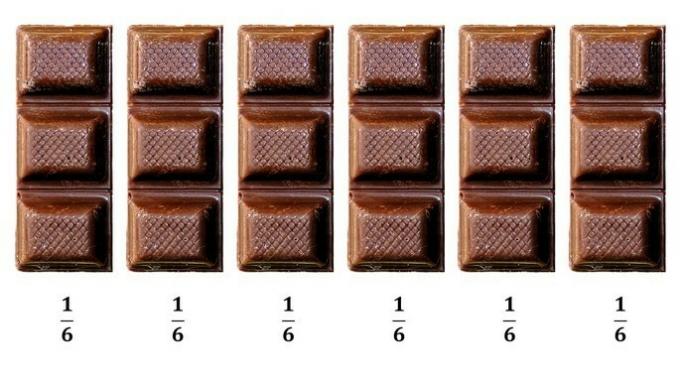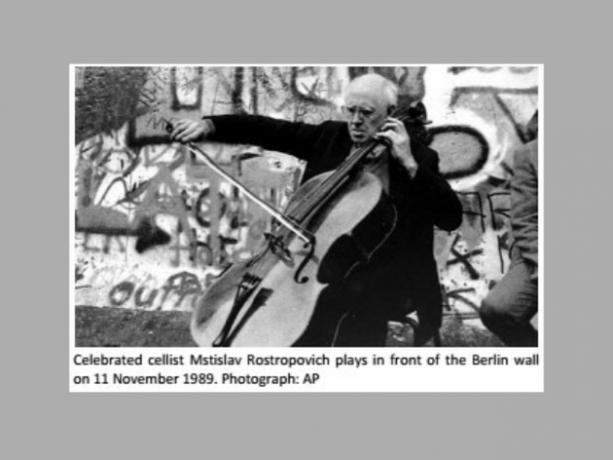Explore statistics in a practical way with our new list of exercises focused on absolute and relative frequency. All exercises have commented solutions.
Exercise 1
At a school, a survey was carried out to analyze students' preferences regarding the type of music they like most. The results were recorded in the table below:
| Kind of music | Number of students |
|---|---|
| Pop | 35 |
| Rock | 20 |
| Hip hop | 15 |
| Electronics | 10 |
| Countryside | 20 |
Determine the absolute frequency of the number of students listening to Eletrônica and the total number of students interviewed.
Correct answer: absolute frequency of the number of students who listen to Electronics = 10. In total, 100 students were interviewed.
In the Electronics line we have 10 students. This is the absolute frequency of students who listen to Electronica.
The number of students who responded to the survey can be determined by adding all the values in the second column (number of students).
35 + 20 + 15 + 10 + 20 = 100
Thus, in total, 100 students responded to the survey.
Exercise 2
In a library, a survey was carried out on literary genre preferences among high school students. The table below shows the distribution of students' absolute frequency according to their preferred literary genre:
| Literary genre | Number of students | Accumulated absolute frequency |
|---|---|---|
| Romance | 25 | |
Science fiction |
15 | |
| Mystery | 20 | |
| Fantasy | 30 | |
| Don't like reading | 10 |
Complete the third column with the accumulated absolute frequency.
Response:
| Literary genre | Number of students | Accumulated absolute frequency |
|---|---|---|
| Romance | 25 | 25 |
Science fiction |
15 | 15 + 25 = 40 |
| Mystery | 20 | 40 + 20 = 60 |
| Fantasy | 30 | 60 + 30 = 90 |
| Don't like reading | 10 | 90 + 10 = 100 |
Exercise 3
In an absolute frequency table with seven classes the distribution is, in this order, 12, 15, 20, 10, 13, 23, 9. So, the absolute cumulative frequency of the 5th class is?
Answer: 13
Exercise 4
In a high school class, a survey was carried out on the height of the students. The data were grouped into intervals closed on the left and open on the right. The table below shows the distribution of heights in centimeters and the corresponding absolute frequencies:
| Height (cm) | Absolute frequency | Relative frequency | % |
|---|---|---|---|
| [150, 160) | 10 | ||
| [160, 170) | 20 | ||
| [170, 180) | 15 | ||
| [180, 190) | 10 | ||
| [190, 200) | 5 |
Fill in the third column with the relative frequencies and the fourth with the respective percentages.
First we must determine the total number of students, adding the absolute frequency values.
10 + 20 + 15 + 10 + 5 = 60
Frequency is relative to the total. Thus, we divide the absolute frequency value of the line by the total.
| Height (cm) | Absolute frequency | Relative frequency | % |
|---|---|---|---|
| [150, 160) | 10 | 16,6 | |
| [160, 170) | 20 | 33,3 | |
| [170, 180) | 15 | 25 | |
| [180, 190) | 10 | 16,6 | |
| [190, 200) | 5 | 8,3 |
Exercise 5
In a high school math class, students were evaluated on their performance on a test. The table below shows the names of the students, the absolute frequency of points obtained, the relative frequency as a fraction and the relative frequency as a percentage:
| Student | Absolute frequency | Relative frequency | Relative frequency % |
|---|---|---|---|
| A-N-A | 8 | ||
| Bruno | 40 | ||
| Carlos | 6 | ||
| Diana | 3 | ||
| Edward | 1/30 |
Complete the missing data in the table.
Since the relative frequency is the absolute frequency divided by the accumulated absolute frequency, the total is 30.
For Eduardo, the absolute frequency is 1.
For Bruno, the absolute frequency is 12. then:
30 - (8 + 6 + 3 + 1) = 30 - 18 = 12
This way, we can fill in the missing data in the table.
| Student | Absolute frequency | Relative frequency | Relative frequency % |
|---|---|---|---|
| A-N-A | 8 | 8/30 | 26,6 |
| Bruno | 12 | 12/30 | 40 |
| Carlos | 6 | 6/30 | 20 |
| Diana | 3 | 3/30 | 10 |
| Edward | 1 | 1/30 | 3,3 |
Exercise 6
In a high school mathematics class, a test with 30 questions was administered. Student scores were recorded and grouped into score ranges. The table below shows the absolute frequency distribution of these intervals:
| Note range | Absolute frequency |
|---|---|
| [0,10) | 5 |
| [10,20) | 12 |
| [20,30) | 8 |
| [30,40) | 3 |
| [40,50) | 2 |
What percentage of students have grades greater than or equal to 30?
Answer: 18.5%
The percentage of students with grades greater than or equal to 30 is the sum of the percentages in the intervals [30,40) and [40,50).
To calculate relative frequencies, we divide the absolute frequencies of each interval by the total.
2+12+8+3+2 = 27
For [30,40)
For [40,50)
In total 11.1 + 7.4 = 18.5%
Exercise 7
The following data represents the waiting time (in minutes) of 25 customers in a supermarket queue on a busy day:
8, 14, 7, 12, 9, 10, 15, 18, 23, 17, 15, 13, 16, 20, 22, 19, 25, 27, 21, 24, 10, 28, 26, 30, 32
Build a frequency table by grouping the information into amplitude classes equal to 5, starting from the shortest time found.
| Time interval (min) | Frequency |
|---|
Response:
As the smallest value was 7 and we have a range of 5 per class, the first is [7, 12). This means we include 7, but not twelve.
In this type of task, it helps to organize the data into a List, which is its ordering. Although this step is optional, it can avoid mistakes.
7, 8, 9, 10, 10, 12, 13, 14, 15, 15, 15, 16, 17, 18, 19, 20, 21, 22, 23, 24, 25, 26, 27, 28, 30, 32
The frequency in the first row [7, 12) is 5, as there are five elements in this range: 7,8,9,10,10. Note that 12 does not enter the first interval.
Following this reasoning for the next lines:
| Time interval (min) | Frequency |
|---|---|
| [7, 12) | 5 |
| [12, 17) | 7 |
| [17, 22) | 5 |
| [22, 27) | 5 |
| [27, 32) | 4 |
Exercise 8
(CRM-MS) Let's consider the following table that represents a survey carried out with a certain number of students in order to find out what profession they want:
Professions for the future
| Professions | Number of students |
|---|---|
| Football player | 2 |
| Doctor | 1 |
| Dentist | 3 |
| Attorney | 6 |
| Actor | 4 |
Analyzing the table, we can conclude that the relative frequency of interviewed students who intend to be doctors is
a) 6.25%
b) 7.1%
c) 10%
d) 12.5%
Correct answer: 6.25%
To determine the relative frequency, we must divide the absolute frequency by the total number of respondents. For doctors:
Exercise 9
(FGV 2012) A researcher took a set of measurements in a laboratory and created a table with the relative frequencies (in percentages) of each measurement, as shown below:
| Measured value | Relative frequency (%) |
|---|---|
| 1,0 | 30 |
| 1,2 | 7,5 |
| 1,3 | 45 |
| 1,7 | 12,5 |
| 1,8 | 5 |
| total = 100 |
Thus, for example, the value 1.0 was obtained in 30% of the measurements carried out. The smallest possible number of times that the researcher obtained the measured value greater than 1.5 is:
a) 6
b) 7
c) 8
d) 9
e) 10
From the table, we have that the values greater than 1.5 are 1.7 and 1.8, which, with their percentages added together, accumulate 12.5 + 5 = 17.5%.
When we do and let's simplify:
So, we have that the number we are looking for is 7.
Exercise 10
(FASEH 2019) In a medical clinic, the heights, in centimeters, of a sample of patients were checked. The collected data was organized in the following frequency distribution table; watch:
| Height (cm) | Absolute frequency |
|---|---|
| 161 |— 166 | 4 |
| 166 |— 171 | 6 |
| 171 |— 176 | 2 |
| 176 |— 181 | 4 |
Analyzing the table, it can be stated that the average height, in centimeters, of these patients is approximately:
a) 165.
b) 170.
c) 175.
d) 180
This is a problem solved by a weighted average, where the weights are the absolute frequencies of each interval.
We must calculate the average height for each interval, multiply by its respective weight and divide by the sum of the weights.
Average of each interval.
Once the averages have been calculated, we multiply them by their respective weights and add them up.
We divide this value by the sum of the weights: 4 + 6 + 2 + 4 = 16
Approximately 170 cm.
Learn more about:
- Relative Frequency
- Absolute Frequency: how to calculate and exercises
You may also be interested in:
- Statistics: what it is, main concepts and phases of the method
- Exercises on Statistics (solved and commented)
- Dispersion Measures
- Simple and weighted arithmetic average
- Weighted Average: formula, examples and exercises
ASTH, Rafael. Exercises on absolute and relative frequency.All Matter, [n.d.]. Available in: https://www.todamateria.com.br/exercicios-sobre-frequencia-absoluta-e-relativa/. Access at:
See too
- Absolute Frequency
- Relative Frequency
- 27 Basic Mathematics exercises
- Exercises on Statistics (solved and commented)
- Mathematics Questions in Enem
- Mathematics lesson plans for 6th grade
- Statistic
- 23 7th grade Mathematics exercises


